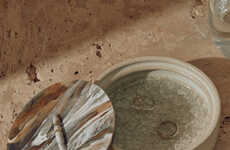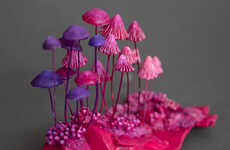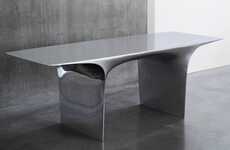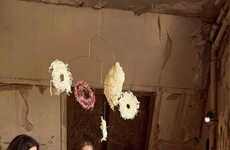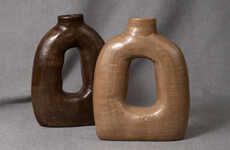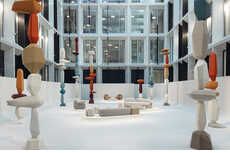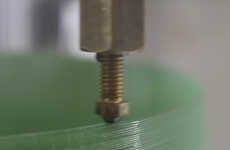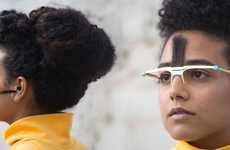
Yesenia Thibault-Picazo Foresees the Future of Crafts with New Collection
Yesenia Thibault-Picazo is a London-based designer who produces a new line of crafty, experimental objects that build on the Anthropocene era. Marked as the point of great human development, the creative channels this historic period to foresee the future. The household collection consists of three products -- each one made of materials that Yesenia Thibault-Picazo believes "will be used by craftsmen hundreds of years in the future."
Each resource that contributes to the designer's Anthropocene era line features a sustainable material that actively challenges a current socio-economic issue. For example, Thibault-Picazo utilizes sheep bone marble -- making a point about animal farming, ocean plastic, and aluminum waste. By bringing such materials in the manufacturing process, the designer starts a discussion.
Each resource that contributes to the designer's Anthropocene era line features a sustainable material that actively challenges a current socio-economic issue. For example, Thibault-Picazo utilizes sheep bone marble -- making a point about animal farming, ocean plastic, and aluminum waste. By bringing such materials in the manufacturing process, the designer starts a discussion.
Trend Themes
1. Anthropocene Era Objects - Disruptive innovation opportunity: Exploring sustainable materials that address current socio-economic issues and challenge traditional manufacturing processes.
2. Craftsmanship of the Future - Disruptive innovation opportunity: Predicting materials and techniques that will be used by craftsmen in the future based on the Anthropocene era.
3. Environmental Consciousness in Design - Disruptive innovation opportunity: Creating household products that raise awareness and spark discussions about sustainable materials and their impact on the environment.
Industry Implications
1. Design and Manufacturing - Disruptive innovation opportunity: Incorporating sustainable materials and techniques into traditional manufacturing processes to create eco-friendly products.
2. Sustainable Materials - Disruptive innovation opportunity: Developing and promoting the use of sustainable materials in various industries, such as construction, fashion, and furniture.
3. Environmental Education and Awareness - Disruptive innovation opportunity: Implementing educational initiatives and campaigns to raise awareness about the impact of material choices on the environment and encourage sustainable practices.
4.4
Score
Popularity
Activity
Freshness


